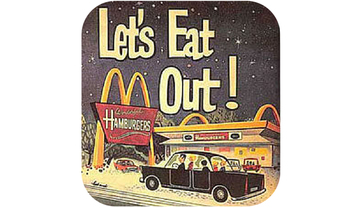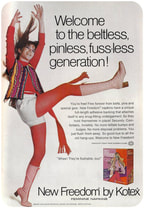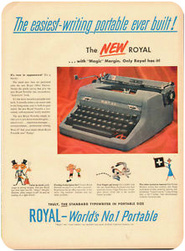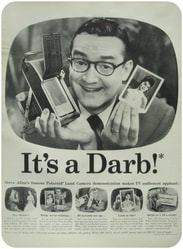Imagine, for a moment, that you are 'people' too.
Go on, pull off those professional shoes, put on your just-another-human-being shoes and go for a stroll.
Think about your own experiences shopping, making an enquiry, trying to find something, completing a form ... whether in the digital or real world.
Think about your own experiences shopping, making an enquiry, trying to find something, completing a form ... whether in the digital or real world.
|
We want the same experience, no matter which 'doorway' we use.
We don't care or need to know how a business is organised internally. We don't think in terms of channels. We just want to get what we came for and have the same experience whenever we engage with an organisation, no matter what channel we use. If we have different experiences on different channels, or if different channels are not linked, we feel a sense of disorientation, uncertainty and frustration which undermine our trust. |
We don't use channels in a linear way.
We don't operate within single channels. We go where we want, when we want. We misbehave. Most of us use at least two channels in our interactions with an organisation. And if we are restricted (even if lovingly), we rebel ... because we can. We have options. We have freedom. |
|
We have high expectations of what a fast and easy service is.
Organisations that use those words lose our respect quickly if the experience doesn't match up. We have experienced fast and easy services so we know it can be done. We will find inspirations that shape our expectations like Dieter Ram's 10 Principles of Good Design and then email them to customer service teams as thoughtful suggestions :) How often have you wondered if staff in an organisation ever actually use their own channels? |
We have power and influence.
We have greater control than ever before about what reaches us, what we can avoid and what captures our imagination. We defy previously-defined social, geographic and economic demographics. Many of us, of all ages and backgrounds, are now in the digital-savvy segment dubbed Generation C. It's all about creativity, community, co-creation, connectedness, channel convergence and control. We're the ones who can build our own websites and social networks, reach many people with our rating of products and take photos and videos that drive news headlines. |
The solution is to make all your content and channels work together, to give people
the same experience with your organisation
no matter which 'doorway' they walk through.
This is also known as integrated marketing communication ... and, yes, it is a thing.
- It makes doing business with you easier and gives people confidence and trust in your organisation.
- It can make a large organisation accessible and efficient. It can make a small business popular and robust.
- It is one of the most effective ways you can realise the full value of your marketing communication spend.
- It's not a new approach. In fact it's been around for a long time. Common sense but not always common practice - it's primarily younger businesses, free of legacy and silo thinking, making the most of it.
- But that's changing. We now operate in an increasingly complex marketing environment, characterised by an explosion of channels, converged technologies and consumer control.
- You can chose to see this as a risk or an opportunity. Either way, IMC capability is now viewed as a critical success factor. In 2012, a survey showed 68% of 1,850 US Chief Marketing Officers put integrated marketing communication ahead of 'effective advertising'. In 2014, a study of 1,000 Australian digital marketing and ecommerce professionals showed that 67% considered the 'orchestration of marketing activities across channels' to be a priority.
- But by far the most-compelling reason to do it is that it's what people want and expect.
And then there's this: are you listening
as much as you are talking?
Positive experiences with your business start with what people know and understand about you. Their perceptions and beliefs. Their needs and wants.
That's where storytelling comes in. Yes, it's about telling a stories with a purpose; but more than that, it is about sharing stories, not just 'talking at people'. It's about hearing other people's stories, not about just adding more self-indulgent noise into the marketplace. It's about becoming part of each others' stories.
It's also known as strategic storytelling, brand storytelling, corporate storytelling, organisational storytelling, business storytelling ... the things we remember ... the bass beat in our head.
That's where storytelling comes in. Yes, it's about telling a stories with a purpose; but more than that, it is about sharing stories, not just 'talking at people'. It's about hearing other people's stories, not about just adding more self-indulgent noise into the marketplace. It's about becoming part of each others' stories.
It's also known as strategic storytelling, brand storytelling, corporate storytelling, organisational storytelling, business storytelling ... the things we remember ... the bass beat in our head.
What's so good about strategic storytelling?
- Stories get people talking
- They amplify our conversations
- They're an effective way for people to share knowledge and learn from and with each other
- They're all about recall. People won’t remember the speech, the powerpoint presentation, the 20-page report, the text-heavy webpage, the brochure, but they will remember a good story
- They can be used across all channels/platforms and formats and are a strong way to cut through information pollution to make your voice heard
- If well-crafted, they can allow people to See, Feel, and Believe in what you are trying to communicate, see meaning and integrity in your goals and be engaged with your business
- They're a powerful way to create unique connections with customers and other stakeholders
- On a more sophisticated level, stories can help an organisation create its own language, to make its brand even more distinctive, relevant, memorable and consistent.
So, integrated marketing communications and strategic storytelling sit at the heart of HOW I do things.
But wait!
Here's a little bit more about how I get things done :)
Other processes and principles I use:
- Balanced Scorecard
- Circular Economy thinking
- Co-creation
- Customer Relationship Management (CRM)
- Data visualisation
- Design thinking
- Gamification
- Golden Circle, by Simon Sinek
- Governance
- Human-Centred Design (HCD)
- Information architecture and knowledge management
- Market intelligence and analysis
- Minto Pyramid Principle, by Barbara Minto
- Mutualism (shared value)
- Positive Utility
- Role of brand
- Social collaboration
- Strategic leadership
- Total Quality Management
- User Experience Design (UXD)
- User Journey/Pathway/Pipeline Mapping
- Workflow management
Tools I use:
- Adobe
- Asana
- Canva
- Clip2Comic
- Coggle
- Curator
- DropBox
- Google Suite
- Microsoft Suite
- Mematic
- Mural
- Paper
- PaperCamera
- SketchMe
- SnapSeed
- SurveyMonkey
- TextingStory
- Venngage
- Weebly
How to get there
Go to the end of the path until you get to the gate.
Go through the gate and head straight out towards the horizon.
Keep going towards the horizon.
Sit down and have a rest every now and again,
But keep on going, just keep on with it.
Keep on going as far as you can.
That’s how you get there.
Michael Leunig
Go through the gate and head straight out towards the horizon.
Keep going towards the horizon.
Sit down and have a rest every now and again,
But keep on going, just keep on with it.
Keep on going as far as you can.
That’s how you get there.
Michael Leunig






